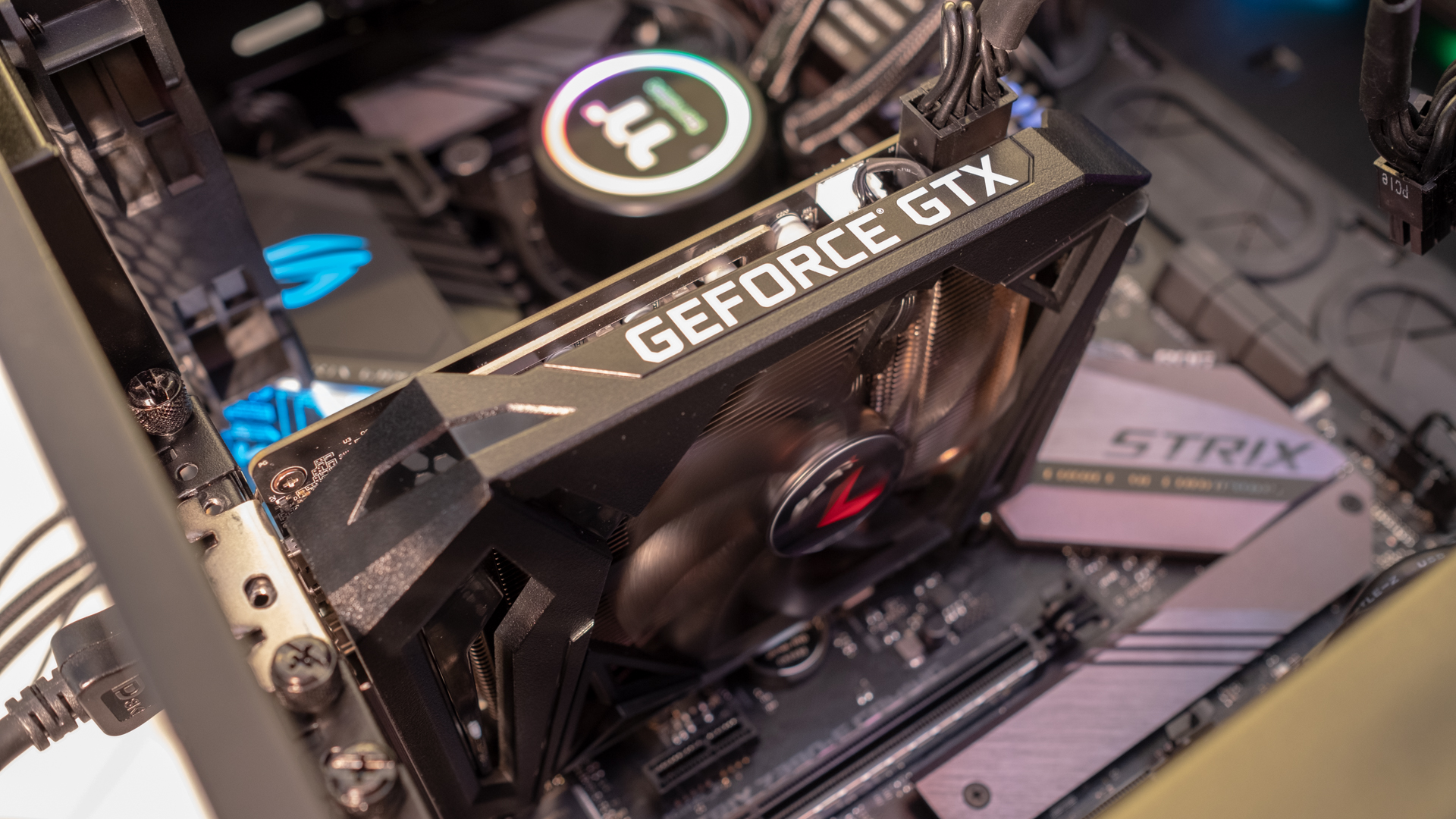TechRadar Verdict
If you’ve been holding out for a reasonably priced, non-ray tracing graphics card from Nvidia that delivers impressive 1440p gaming, the PNY GTX 1660 Ti XLR8 OC is the GPU for you.
Pros
- +
Impressive, silky-smooth 1440p gaming
- +
Major performance upgrade over GTX 1060
- +
Reasonably priced
Cons
- -
GDDR6 memory is limited to 12Gbps speeds
Why you can trust TechRadar
The Nvidia GeForce GTX 1660 Ti feels like a graphics card from a bizzaro alternate reality where RTX never happened and everyone got the GPU they wanted. It’s a GPU that’s built on Team Green’s cutting-edge Turing architecture, featuring generational leaps and the affordable prices we deserved.
The PNY GeForce GTX 1660 Ti XLR8 Gaming OC is a particularly good version of the new mid-range graphics card, thanks to the compact size and impressive performance. If you’ve been waiting for a substantial upgrade from your 10-series Pascal card, and couldn’t afford Nvidia’s ray traced future, this is the graphics card for you.
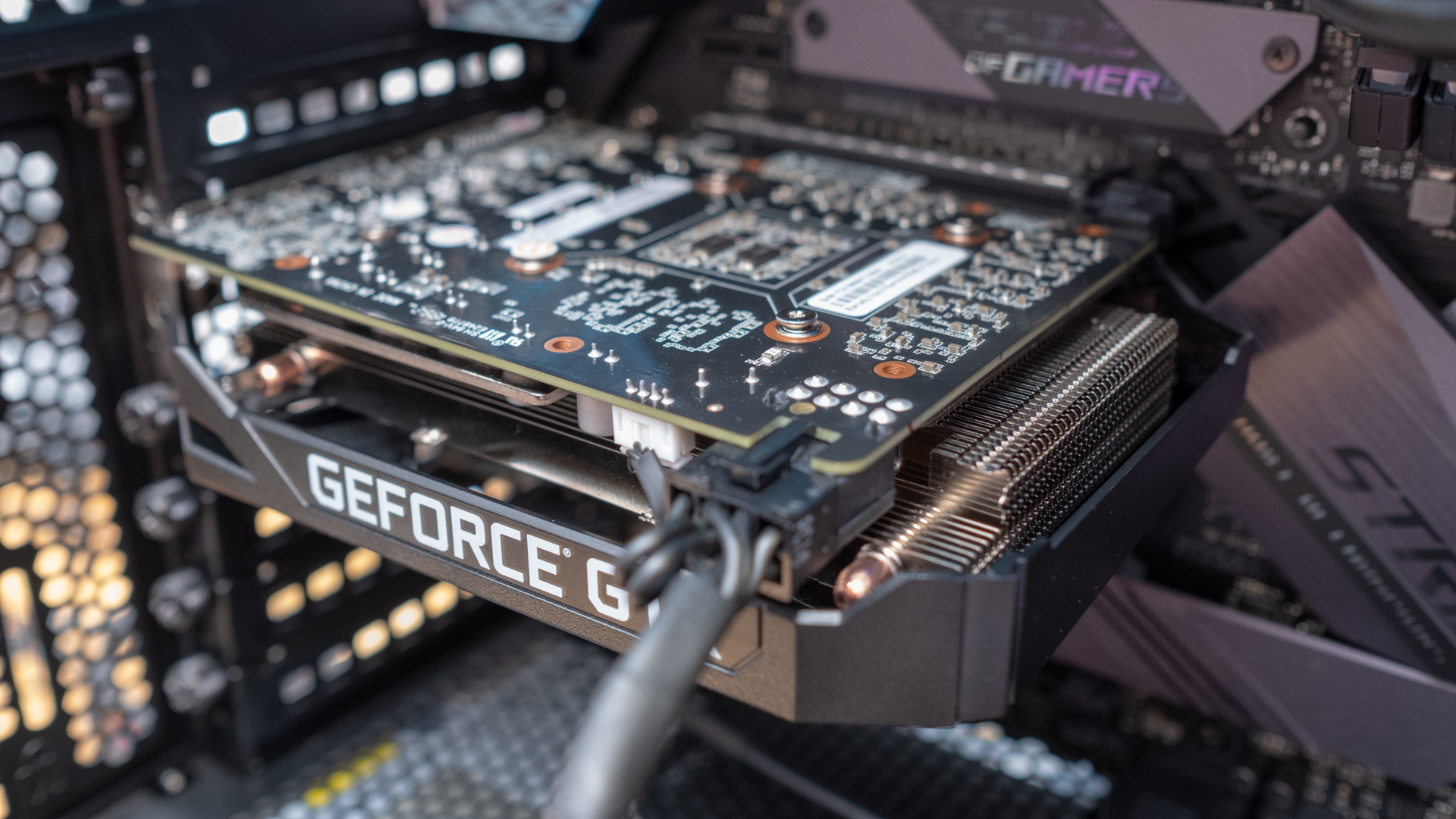
Pricing and availability
Nvidia says GeForce GTX 1660 Ti cards will start at $279 / £259 / AU$469 and thankfully PNY decided its XLR8 Gaming OC variant will cost the same amount.
Surprisingly, this new GPU is even cheaper than the $299 / £249 / AU$499 Nvidia GeForce GTX 1060 it’s replacing. But, what’s more important is that the 1660 Ti is also much less expensive than the lowest priced RTX card, the Nvidia GeForce RTX 2060, which runs for $349 / £329 / AU$599 if you were to buy the company’s own Founders Edition.
The PNY GeForce GTX 1660 Ti's pricing also puts it in direct competition with the $279 / £249 / AU$425 AMD Radeon RX 590, which has been happily lapping up the mid-range market by itself since its mid-November launch.
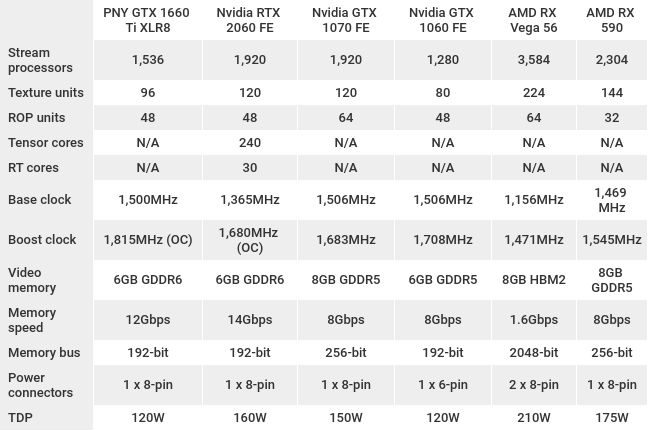
Specifications and features
One key distinction that separates the PNY GeForce GTX 1660 Ti XLR8 OC from the rest of the Nvidia’s Turing series is the fact that it’s not an RTX card. Rather, this GTX card doesn’t feature any RTX cores or tensor cores to power ray-traced lighting or DLSS-based anti-aliasing, respectively.
This graphics card, and all versions of the GeForce GTX 1660 Ti, also lose out on Virtual Link connector – otherwise known as the specialized USB-C Thunderbolt 3 port for virtual reality. Also forget about ever SLI-ing any of these GPUs together for a multi-card setup, as that feature is reserved for high-end parts like the RTX 2080 and RTX 2080 Ti.
Despite all these major features being cut, the TU116 GPU at the heart of this graphics card is still based on the Turing architecture. This means that this part is built upon Nvidia’s latest 12nm process, which is a noticeable die shrink since the company’s last 16nm Pascal architecture. The 1660 Ti also still features 6GB of GDDR6 video memory just like the RTX 2060 – albeit clocked at a slightly lower 12Gbps speed.
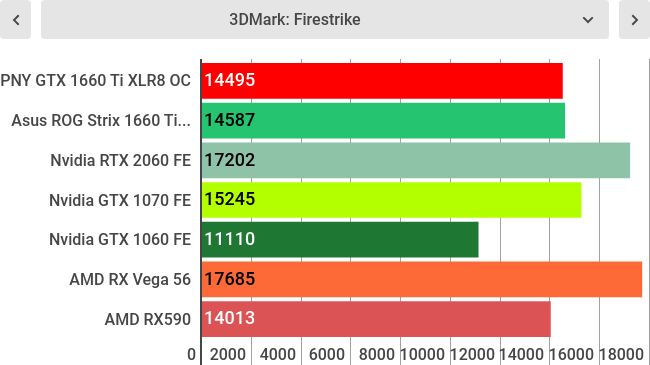
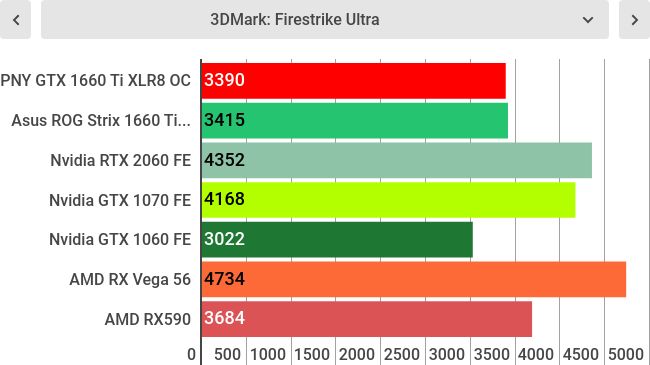
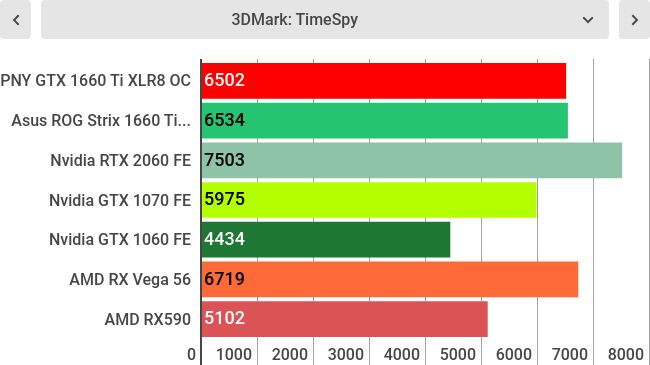
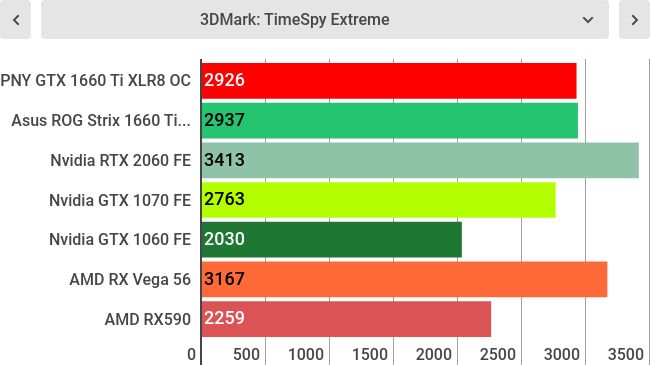
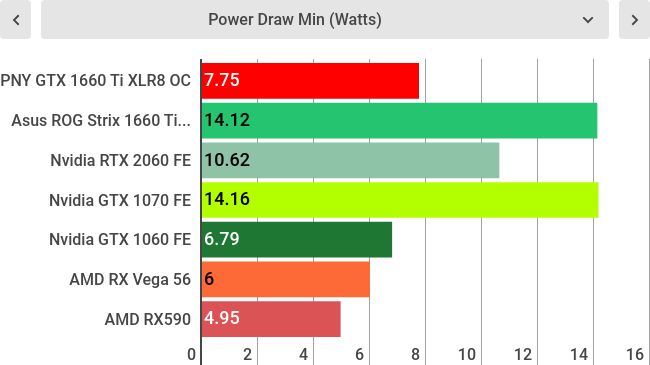
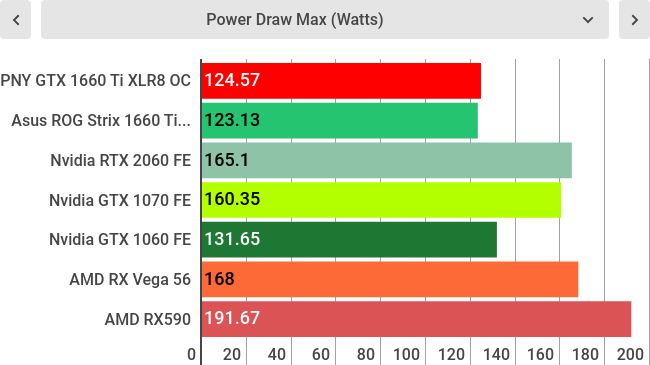
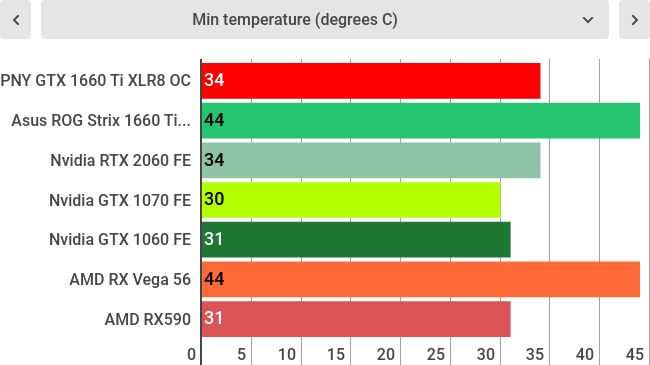
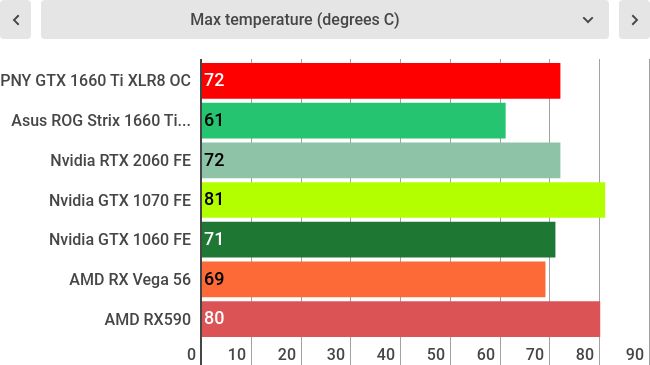
CPU: 3.7Ghz Intel Core i7-8700K (hexa-core, 12MB cache, up to 4.7GHz)
RAM: 32GB Vengeance LED DDR4 (3,200MHz)
Motherboard: Asus ROG Strix Z390-E Gaming
Power Supply: Corsair RM850x
Storage: 512GB Samsung 960 Pro M.2 SSD (NVMe PCIe 3.0 x4)
Cooling: Thermaltake Floe Riing 360 TT Premium Edition
Case: Corsair Crystal Series 570X RGB
Operating system: Windows 10
Performance
Looking at how the PNY GeForce GTX 1660 Ti XLR8 OC performs in benchmarks it seems like a Nvidia RTX 2050 by any other name. The performance numbers above put the card in front of the GTX 1060, but it has more trouble outpacing the GTX 1070 in most tests.
Meanwhile, the Nvidia RTX 2060 holds onto a healthy lead, outclassing the 1660 Ti in synthetic benchmarks by a significant margin, and by 4-10 more frames per second (fps) in gaming tests.
Compared to the XFX Radeon RX 590 Fatboy, the 1660 Ti also struts ahead in all but one benchmark with higher scores and fps.
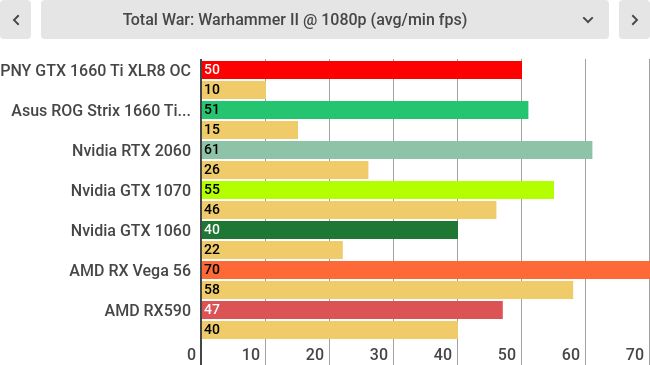
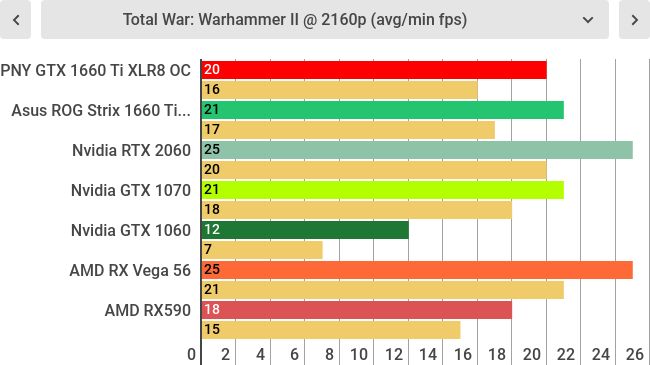
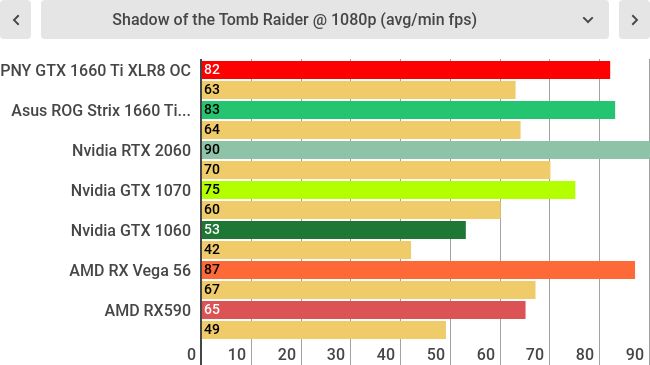
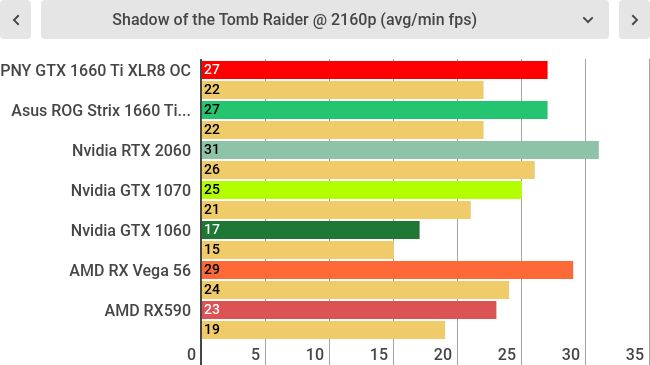
Outside of our traditional testing we found the PNY GTX 1660 Ti was mighty enough to handle Anthem and Resident Evil 2 at a playable 30 fps – though sometimes the frame rate veers between plus and minus 10 fps – with both titles set to 4K and Ultra quality settings.
Users looking for a slicker 60 fps experience will be better off lowering their resolution to QHD (2,560 x 1,440). At a 2K resolution while maintaining Ultra quality settings, Anthem ran at 40-50 fps and Resident Evil 2 rendered at an even smoother 60-80 fps.
Full HD gaming with the GTX 1660 Ti is no slouch either. With a more mundane 1080p resolution Anthem gave us a consistent 50-70 fps frame rate and Resident Evil, once again, ran even better at 100-120 fps.
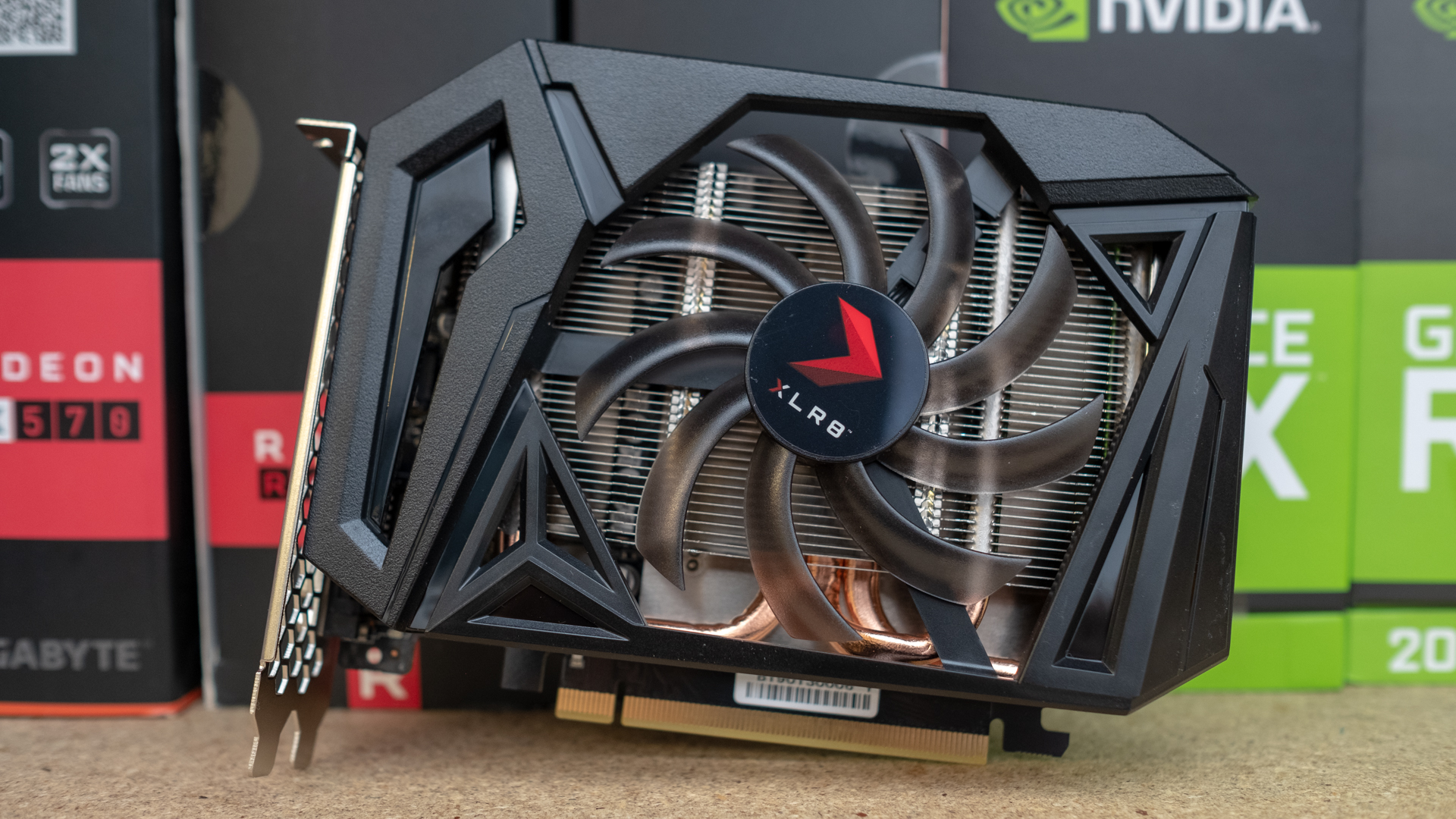
Final verdict
All told, the PNY GeForce GTX 1660 Ti XLR8 OC is a fantastic graphics card for a very reasonable $279 / £259 / AU$469 price. With this GPU, you’re getting performance on the same level of a GTX 1070 with a part that costs less than the GTX 1060 it replaces.
It delivers high-frame rate Full HD gaming, and even allows for very smooth QHD experiences even with the latest games. Of course, if you’re looking to inject the latest tech into your games, ray tracing and DLSS remain exclusive features found on Nvidia RTX cards – and the GeForce RTX 2060 is also just barely more expensive than this part.
Whether you’re a newcomer to the PC Gaming world or have been waiting out with an older GPU, the GeForce GTX 1660 Ti is a worthy upgrade. Our largest complaint with this graphics card is we just wished Nvidia would have released it sooner.
Image Credits: TechRadar
Kevin Lee was a former computing reporter at TechRadar. Kevin is now the SEO Updates Editor at IGN based in New York. He handles all of the best of tech buying guides while also dipping his hand in the entertainment and games evergreen content. Kevin has over eight years of experience in the tech and games publications with previous bylines at Polygon, PC World, and more. Outside of work, Kevin is major movie buff of cult and bad films. He also regularly plays flight & space sim and racing games. IRL he's a fan of archery, axe throwing, and board games.
